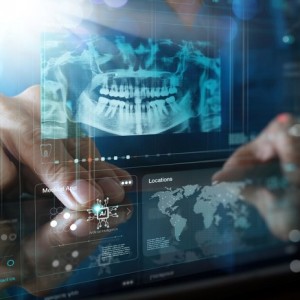
Artificial intelligence and oral cancer diagnosis
Lara Figini
Oral cancer (OC) is one of the most common forms of head and neck cancer and continues to have the lowest survival rates worldwide, despite advances in research and therapy. The prognosis of OC has not improved significantly in recent years, creating a persistent challenge in the biomedical field. According to the World Health Organization, it is estimated that there were 377,713 new cases and 177,757 deaths from lip and oral cavity cancer worldwide in 2020. It is estimated that over 90% of all oral cancers are oral squamous cell carcinomas (OSCC), highly aggressive and have a strong propensity to spread both locally and to other parts of the body. Early diagnosis of OSCC is vital for successful therapy, to increase the chances of survival, and to achieve lower rates of mortality and morbidity. Microscopy-based histopathological analysis of tissue samples is considered the gold standard for the diagnosis and classification of oral cancer. However, this approach can be slow and error-prone, limiting its clinical utility. In recent times, significant efforts have been invested in studying the potential of artificial intelligence (AI) to improve medical diagnosis. Machine learning (ML) techniques identify distinguishable patterns from existing data, and rely on human knowledge and efforts to distinguish their characteristics. In the field of oncology, artificial intelligence (AI) has seen rapid development, with notable successes reported in recent times.
Materials and methods
In a recent review, published in Biomedicines, the authors critically evaluated the studies available in the literature regarding the use of artificial intelligence in the diagnosis, classification and prediction of oral cancer (OC) using histopathological images. An electronic search of several databases, including PubMed, Scopus, Embase, Cochrane Library, Web of Science, Google Scholar and Saudi Digital Library was conducted for articles published on the topic between January 2000 and January 2023. Nineteen studies, which satisfied the inclusion criteria were subjected to critical analysis using QUADAS-2, and the certainty of the evidence was assessed using the GRADE approach.
Results
AI models have been widely applied in oral cancer diagnosis, differentiation between benign and malignant tumors, prediction of survival of OC patients, and OC grade. The AI models used in these studies showed an accuracy between 89.47% and 100%, a sensitivity between 97.76% and 99.26%, and a specificity between 92% and 99.42%. AI's ability to diagnose, classify and predict the occurrence of OC has been found to surpass existing clinical approaches.
Conclusions
From the data of this review, which must be confirmed in other similar studies and reviews, it can be concluded that artificial intelligence has excellent potential to offer superior results in terms of precision and accuracy, helping oral pathologists to significantly improve their diagnostic results and reduce the probability of error.
Info: Application and Performance of Artificial Intelligence (AI) in Oral Cancer Diagnosis and Prediction Using Histopathological Images: A Systematic Review. Sanjeev B. Khanagar, Lubna Alkadi, Maryam A. Alghilan, Sara Kalagi, Mohammed Awawdeh, Lalitytha Kumar Bijai, Satish Vishwanathaiah, Ali Aldhebaib and Oinam Gokulchandra Singh. Biomedicines. 2023 June 1;11(6):1612. doi: 10.3390/biomedicines11061612.
 Related articles
Related articles
Digital Dentistry 22 October 2025
Artificial intelligence in dentistry: Exploring emerging applications and future prospects
This narrative review aimed to explore the evolution and advancements of artificial intelligence technologies, highlighting their transformative impact on healthcare, education, and specific aspects...
Digital Dentistry 15 October 2025
The Impact of Artificial Intelligence on Diagnostic Accuracy and Treatment Planning in Dentistry
The use of AI in dentistry is revolutionizing the field of dentistry by enhancing the accuracy of diagnosis and treatment.
Oral pathology 23 June 2025
rtificial intelligence (AI) has rapidly advanced in healthcare and dental education, significantly impacting diagnostic processes, treatment planning, and academic training.
Artificial intelligence (AI) is the development of computer systems whereby machines can mimic human actions. This is increasingly used as an assistive tool to help clinicians diagnose and treat...
Restorative dentistry 25 February 2025
Artificial intelligence applications in restorative dentistry: A systematic review
Artificial intelligence (AI) applications are increasing in restorative procedures. However, the current development and performance of AI in restorative dentistry applications has not yet been...
 Read more
Read more
Digital Dentistry 05 December 2025
Artifact-resistant superimposition of digital dental models and cone-beam computed tomography images
Combining the maxillofacial cone-beam computed tomography (CBCT) model with its corresponding digital dental model enables an integrated 3-dimensional (3D) representation of skeletal structures,...
Editorials 05 December 2025
Rural dental residency program receives a lifeline from donor organizations
When federal funds to HSDM’s rural residency program went unpaid, a coalition of regional partners stepped up to secure the program’s future.
Products 05 December 2025
VideaHealth, the leading dental AI platform, recently announced the appointment of Austen Asadorian as Chief Revenue Officer. With two decades of experience scaling high-performing organizations,...
News 05 December 2025
VELMENI, a global leader in artificial intelligence (AI) solutions for dental care, and Jazz Imaging, an innovative provider of dental imaging systems, recently announced a strategic partnership...
News 05 December 2025
BIOLASE, the global leader in dental lasers, announced its participation in the 2025 Greater New York Dental Meeting (GNYDM), taking place November 28–December 3 in New York City.















